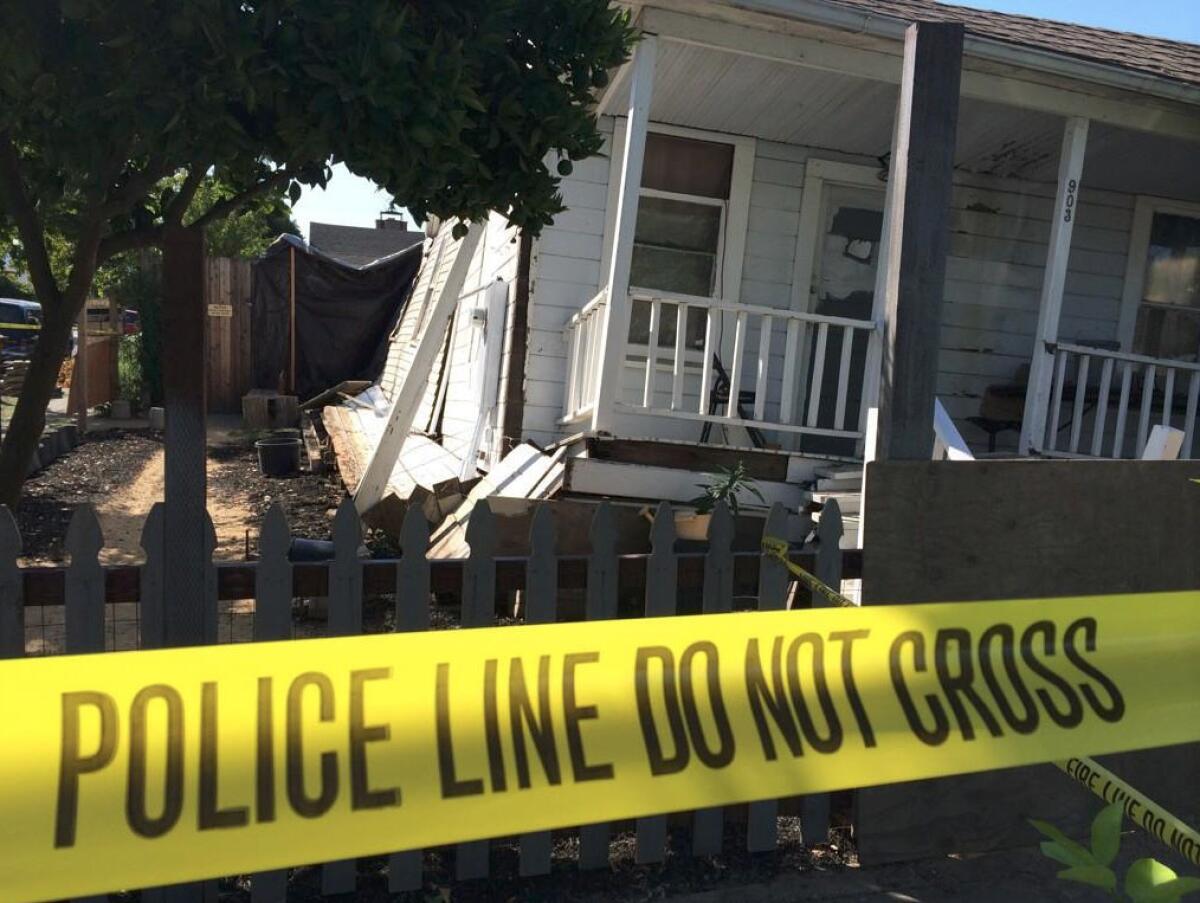West Napa Fault is capable of producing bigger earthquakes

- Share via
On the list of California’s most dangerous earthquake faults, the West Napa Fault in the Bay Area doesn’t rank as especially notorious. It’s about 20 miles, much shorter than the better-known Hayward and Rodgers Creek faults, which are capable of a 7.2 magnitude quake.
But Sunday’s 6.0 earthquake showed the fault that runs just west of the Napa Valley isn’t to be ignored. It produced the largest earthquake in the Bay Area since the deadly 6.9 Loma Prieta quake in 1989.
The shaking was dwarfed both in magnitude and sheer destruction by much larger earthquakes, such as the 1989 quake as well as the 1994 and 1971 temblors in the San Fernando Valley.
But considering that Sunday’s earthquake ran less than half the length of the fault, scientists said the temblor could have been worse.
“This is one of the smaller of the sets of faults in the East Bay, but it’s still obviously large enough to create a magnitude 6 quake, and it didn’t rupture the length of the whole fault,” said Jeane Hardebeck, a seismologist for the United States Geological Survey in Menlo Park, Calif. “If it had, you could imagine a much larger earthquake.”
Like a lot of faults, she said, it runs parallel to the roughly 800 mile long San Andreas Fault. Sunday’s quake happened just south of Napa and ran north along the fault, which runs on the western side of the Napa Valley, Hardebeck said.
The last time Napa was shaken hard by a destructive earthquake was Sept. 3, 2000, when a 5.2-magnitude quake struck the area.
Sunday’s quake marked another success for the state’s fledgling alert system.
Scientists at UC Berkeley said their early-warning system on campus gave an alert of 10 seconds before the shaking could be felt. Though Napa would not have gotten a warning because of its proximity to the epicenter of the earthquake, Richard Allen, director of UC Berkeley’s Seismological Laboratory, said the alert showed the promise of the technology.
Once fully developed, the system could give downtown L.A. 40 to 50 seconds of warning that the Big One was headed from the San Andreas fault, giving time for elevators to stop at the next floor and open up, firefighters to open up garage doors, high-speed trains to slow down to avoid derailment and surgeons to take their scalpels out of patients.
The system works because although earthquakes travel at the speed of sound, sensors that initially detect the shaking near the epicenter of a quake can send a message faster — at the speed of light — to warn residents farther away that the quake is coming.
A lack of funds, however, has slowed the system’s progress. Last year the state Legislature approved such a system, but the legislation mandated that no state general fund money be used to cover the estimated $80 million it would take to complete the system.
More to Read
Sign up for Essential California
The most important California stories and recommendations in your inbox every morning.
You may occasionally receive promotional content from the Los Angeles Times.














